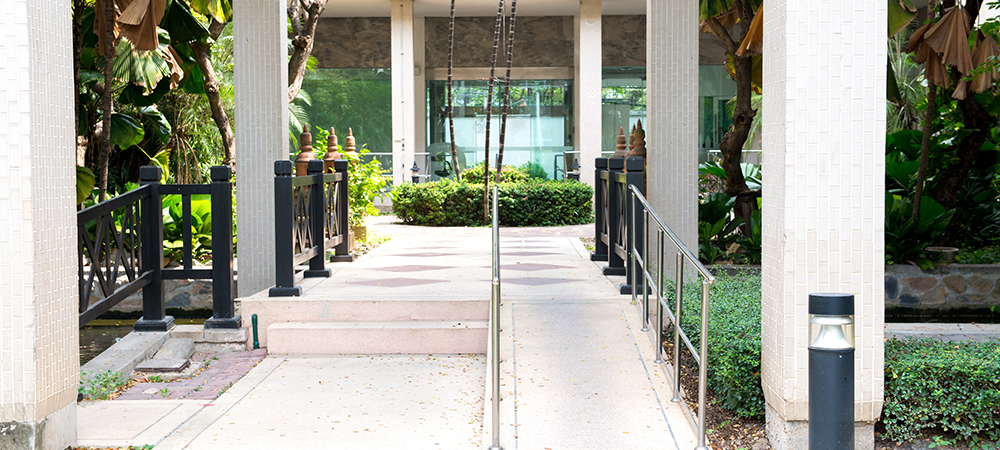I ask two experts how technology can support urban areas in enhancing their inclusivity and accessibility during the planning and design stage, beyond ticking legal boxes.
Accessible transportation
We have seen a slow adoption of technology in accessible transportation. A few governing bodies have adopted tools such as Sm@rt Technology’s Sm@rtbus app which aids those with visual impairments. Offering audible announcements of stop names and bus schedules to enhance inclusivity.
Although most trains and planes are happy to help and have ramps and other equipment available with advanced digital booking, the lifestyle attached to this can knock people with disabilities confidence with an attitude of people ‘going out their way’ to help.
This is where ‘Universal design’ comes in. This term involves creating products, environments and systems that are accessible and usable by people of all abilities, without the need for adaptation or specialised design.
Planning
Designers can utilise digital technologies and online resources to integrate the concept of Universal Design.
With BIM being available and utilised by most building engineers and architects, it should be encouraged that the planning stage does more than simply tick boxes. In ‘Reasoning about accessibility for disabled using building graph models based on BIM/IFC’, Barbara Strug and Grażyna Ślusarczyk, state: “While the design tools usually support the legal requirements for accessibility for disabled persons, little effort has been observed to address the quality of the access routes in terms of time, length and convenience of the route to be taken.”
Infrastructure
Accessible infrastructure may include considerations such as ramps and elevators, but even these features have room for improvement. Technologies can enhance the user experience by making them more reliable, offering digital warnings of whether they are out of order or simply making travelling from one side of a building to another a more streamlined journey. Otis ONE IoT platform is an example of a technology that enables a seamless system for people to access their office buildings, go through security, remotely call an elevator and arrive at their locations without ever touching a button.
Other features that enable people with disabilities to navigate public spaces independently can also include road safety. Portsmouth City Council recently introduced SmartCross+ technology, aiding pedestrians and cyclists, particularly those with disabilities through a smartphone app activation and low-level cycle signals offer safer crossings.
Smart Car Parks and AI should also be considered in the planning stage as they can offer information on available spaces, whilst estimating availability from previous data, in advance of an excursion.
Assistive tech
It’s all well and good, popping in ramps, toilets and parking spaces, but in the name of equity and experience, there are several devices, tools and software that councils, tourist spots and designers place after the planning stage.
Whilst attending a public space, the experience for the visually impaired can sometimes be lacking. Companies like VocalEyes provide recorded descriptions at museums, galleries and heritage sites, providing a key access tool for blind and visually impaired people. A recorded guide can support visitors to access and navigate your site and exhibitions at a time which suits them.
There is untapped potential for more advanced versions of audio guides in public spaces through the integration of IoT and AI in the planning stage for a more advanced experience and to encourage people into new spaces.
John Davis, Owner and Operational Director at Springfield Steel Buildings

There are a wide range of digital tools currently pushing construction development forward. Geospatial mapping and visualisation enables urban planners to visualise the space around them before moving ahead with construction. This enables them to notice potential blindspots early in the process and adjust their plans accordingly. By keeping the needs of the disabled in mind, planners can tweak and refine their projections so that wheelchair users have easy access via ramps and lifts. The detailed information provided by these technological schematics allows them to implement these features in a safe and structurally sound manner, taking into account the layout and infrastructure of the environment.
Somewhat tied into this idea are the concepts of data collection and predictive analysis. By gathering data on population densities and community deficits, urban planners can plan for the future, resulting in long-term stability. Trends can be pre-empted, giving planners a head start on beginning work. Furthermore, online platforms and virtual town hall meetings allow for direct input from people with disabilities. Their thoughts and advice can prove invaluable to the development process, giving planners a new angle or perspective on their duties.
Additionally, using modern technology for urban planning allows greater collaboration between designers with no limit on geography. Organisations can hire people from around the globe with a more specialised focus on particular aspects of design, including those that accommodate different disabilities. The Internet of Things (IoT) allows for more compatibility and communication between professionals and companies, stimulating inspiration for efficient design. In a more specific sense, including technology in the urban design itself could provide various helpful tools for those who suffer from different ailments. This could include voice-activated lights, motion sensors, smart doorbells, and more.
Vaila Morrison, RIBA, Stannah’s inclusive design expert

The key to creating inclusive buildings, environments and communities is to design to enable people of all ages and abilities to navigate around and access and as much possible independently. Accessible design doesn’t just benefit disabled and older people but makes things easier for all of us. This includes physical accessibility, sensory accessibility, as well as the integration of assistive and wearable technologies.
Smart Building technology is becoming a major ingredient in planning for, constructing, running and interacting with buildings. At home, work or out and about.
It allows us to gauge the sustainability and suitability of development both at a large scale (community, city, national and even international) and at small scale (within a building, individual home, room or system).
Advances in technology mean that gathering of building use data is much easier than ever before, and this data can allow monitoring of any features, including those which maximise accessibility, to help enhance and improve usability and comfort.
Smart Technologies can be used to integrate and automate systems which will enable easier access in many different ways. We have all experienced the benefit that an automatic door can bring for example, and this same concept can translate to anything, from automated or customised adjustments in heating and lighting levels, to accessing travel information and ordering food!
AI is likely to be relied upon more and to adapt to the results from monitoring of features in buildings and systems, to enhance the overall functionality or adjust things based on the occupants’ needs.
As we design in the present, we must embrace the potential technologies of the future and integrate systems, like data enabled connectivity, that we can foresee will allow us to enhance inclusivity and the experience for everyone in our buildings and cities.




